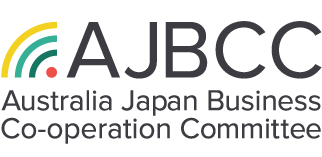13 Aug Japanese Sake: The Next Frontier?
Everyone knows about the international boom of Japanese food, but what’s happened to the companion of Japanese food, Japanese sake? Perhaps it is surprising that despite the culinary boom, only 3.5% of Japan’s domestic production of sake is currently exported, according to the Ministry of Agriculture Forestry and Fisheries (MAFF). This extremely low level of export is being hailed as a possible new frontier for the sake industry. While a shrinking Japanese domestic market has led to a decline in sake production, the development of the Japanese sake market abroad represents the final frontier for Japanese sake producers, according to the Japan Sake and Shochu Information Center.
From a small base, export volumes have nearly doubled over the past six years – the annual export market is now valued at a modest 18.6 billion yen (around A$227 million) and growing, according to the Japanese National Tax Agency. The most recent data for 2017 shows that the five major sake export markets are the USA, Hong Kong, mainland China, South Korea and Taiwan. Year on year, the sake exports have grown by 20%, although exports to mainland China far exceeded this – increasing more than 80%.
Why have the exports been doubling over the last six years? It has come about because of the interplay of a number of factors which include:
- Strong expansion of Japanese cuisine abroad
- The Japanese Government recently embarking on the promotion of sake abroad
- Recognition of Japanese sake intellectual property (IP)
Cuisine
Another contributor to the increase in sake exports has been the boom in Japanese restaurants internationally. Reflecting increased overseas consumer appeal for Japanese cuisine, the number of Japanese restaurants established abroad has mushroomed from 55,000 in 2013 to 118,000 in 2017 (MAFF statistics).
Promotion
Additionally, the Japanese Government has actively promoted overseas the special nature of Japanese culture, including food and sake. This has its origin in the Ministry of Economy Trade and Infrastructure (METI)’s “Cool Japan Strategy” which was developed to emphasise uniquely Japanese products and culture, including things such as content (Anime and Manga), traditional arts and crafts, as well as Japanese food. In the case of food export promotion, MAFF’s budget has recently expanded to around A$70 million annually.
Intellectual Property (IP)
Closing off the loop to protect the Japanese IP, in 2013 Japanese sake joined the list of the UNESCO Intangible Cultural Heritage. Further, in 2015 Japanese sake was designated as a Geographical Indication (GI), so that only if it has been made in Japan and using Japanese rice can it be called “Japanese sake”. Efforts have been made to protect this identification globally with Japanese sake’s GI included as part of the Japan-EU Economic Partnership Agreement in 2017. This means sake has joined the likes of champagne as a protected regional GI. If indeed overseas markets are the final frontier, then this protection is designed to maintain the brand and quality image of Japanese sake in the minds of overseas consumers going forward.
Japanese sake export promotion and Australia
Australian’s fondness for Japanese cuisine means that as Australian consumers are educated about sake and their various kinds, consumption here will continue to grow. In June, the Japanese Government, as part of its ongoing promotion program, supported the visit of a group of 18 sake companies to Sydney. The visit was coordinated by JETRO. These companies marketed to the Australian wholesale trade representing major interested Australian restaurant owners.
Note:
Japanese rice used in manufacturing sake is fermented. The rice grain is milled, and in the process the outer layers of the rice are removed. The more that is milled off the rice grain the higher the quality of the sake that is produced. The main categories are (the percentage is the ratio of the original rice grain remaining):
- Junmai (more than 60%)
- Junmai ginjo (less than 60%)
- Junmai daiginjo (less than 50%)
You can read more about Japanese sake from the website of the Japan Sake and Shochu Makers Association.



